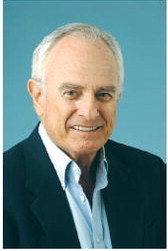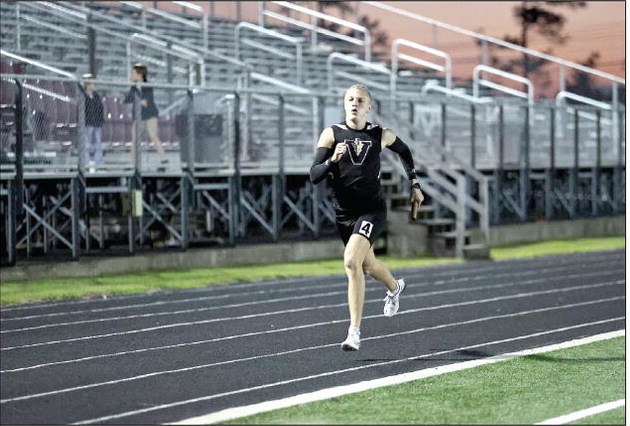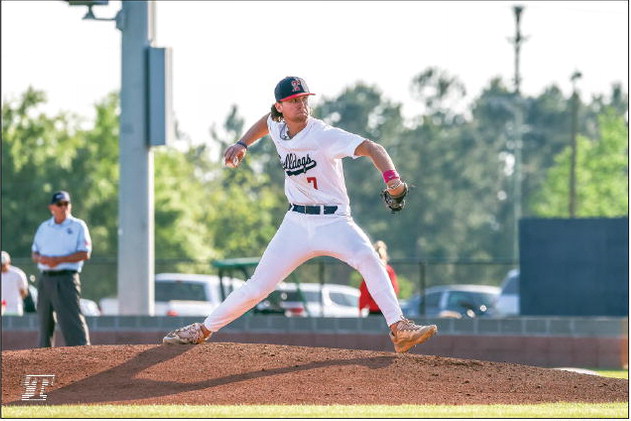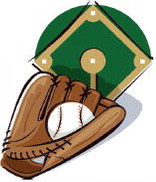Playing Golf Across The Pond
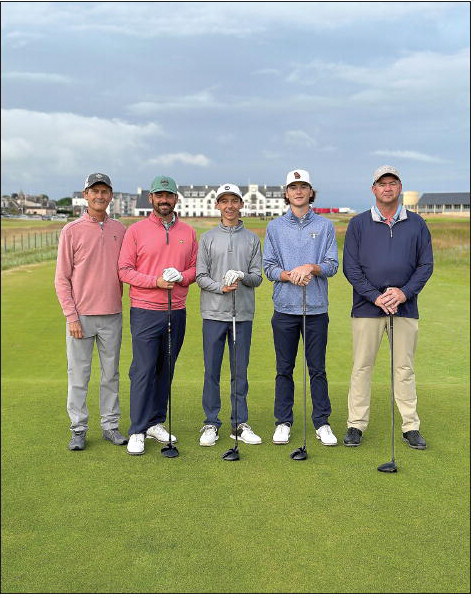

Two local families got the chance of a lifetime to head to Scotland and take on some of the world’s most famous golf courses. Rusty Mosley, along with his father Ken, wife Amanda, and son Austin and daughter Ella, traveled with Russ Bell and his son Matthew, across the pond to play the likes of Carnoustie, Royal Troon, St. Andrews, and Turnberry.
The group left the United States and flew into Edinburgh, the capital of Scotland. They then drove to Troon, where they stayed. They played eight different courses while they were there over the seven-day period. They kicked off the trip with Royal Troon on the day that they arrived. Troon starts with holes down the Firth of Clyde with several holes right on the sea.
They then took on Trump Turnberry, which is famous for the Tom Watson and Jack Nicklaus' “Duel in the Sun,” and for Watson making a run at history in his mid 50's for another Claret Jug. Turnberry has seven holes right on the ocean to provide a beautiful backdrop for the golf. The group then headed back to Edinburgh to tour Edinburgh Castle, which was first established 1,100 years ago and sits on famous Castle Rock. The Castle has been of major strategic importance over its years and been under siege a total of 26 times during the many wars in the United Kingdoms.
They then headed to St. Andrews and played across many of the courses there continued from page
over the remainder of their trip. They were not able to play on the Old Course but were able to play the New Course. The New Course is not new as it was built in 1895 but was the second of the courses at St. Andrews. It was designed by the legendary Old Tom Morris.
They attempted to get onto the Old Course, even getting up around 2:00 a.m. two days in a row, but due to the lottery to get a tee time they were always just outside the called numbers. They did get to watch players coming up hole 18, and even got to get a picture on the famous Swilcan Bridge, which was originally built over 700 years ago for shepherds to move their flocks over the Swilcan Burn.
The group also played at Kingsbarn on the Scottish coast with 1.8 miles of coastline. Kingsbarn is a unique setting that has had golf since the 1700’s. It closed in 1850 but was reopened in 1922 but shuttered again at the onset of World War II. During the war the course was reverted to pasture and was filled with land mines and had defense towers installed to be on the lookout for the Nazis. The current course began construction in 1997 and opened in 2000. It is considered one of the top courses in the world and has no membership and is open to all players.
The group then played the West Course at North Berwick on the edge of the Firth of Forth, which Mosley said was a phenomenal course. This is another seaside course with the sea in play on six holes. They wrapped up the trip at Dumbarnie.
Several of the locations that they played have hosted The Open Championship (British Open). Golf has been played in Scotland, the home of golf, since 1552, where it began at St. Andrews. The current St. Andrews club was founded in 1843, Carnoustie in 1842, and Troon in 1878. Those three courses have hosted The Open on a total of 48 occasions, with St. Andrews hosting 30 of those.
The courses in Scotland are very different than those in the US, as they are links style courses. That means that they have very few if any trees and are laid out with lots of mounds and small bunkers. Bell said that one of the hardest things to deal with at many of the courses is wind. Several of the courses are on the Scottish coast and so wind plays a large factor in the difficulty of the courses.
Rusty Mosley said, “I have been three times before, but this time got to take my son with me. That was special. He isn't one to say a lot, but you could just see it on his face, him recognizing the significance of the courses that we were playing. You can tell when you are there just the history of everywhere you go. Going to Edinburgh Castle, seeing the artifacts, you can't find that here in the states, so having the family there was special.
“The caddies were also great. That great accent, the way they know the courses, giving tips about the area to tell you where to go eat at, the places to see, they are great. Austin really connected with one at Carnoustie, and they had good time on the course. He shot a 76, the weather was perfect, and that was a fun day to be a part of.”
Mosley stated that the weather can really effect the golf. He said that at Carnoustie on one hole he hit driver, seven iron on their first round; then a couple of days later on the same hole the wind was up and he hit driver, three wood, wedge.
Bell added, “Scotland is a very cool part of the world. The people were all very nice, it has beautiful countryside, and we just had a really good time. Getting to play with our kids was great. We had to walk on all the courses, no carts, and we had caddies that were just great. They really got to tell us about the history of the courses and show us so much of the remnants of the defenses from World War II. I think that our boys understood the historical significance of the trip and of the courses that we got to play.
“The kids were kind of in awe of the whole thing at some points. Especially getting our picture on the Swilcan Bridge at St. Andrews was a pretty significant thing. Hearing the caddies talk about Ben Hogan at Carnoustie was cool as well.”
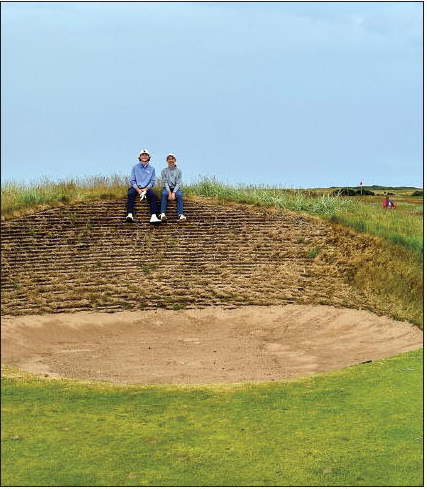
(L to R): Matthew Bell and Austin Mosley sit atop one of the famous sand traps at Carnoustie.
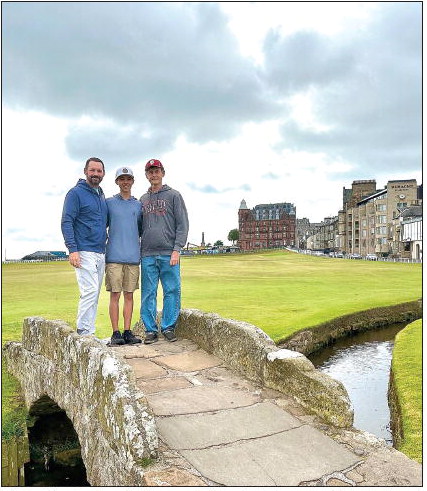
(L to R): Rusty, Austin, and Ken Mosley on the Swilcan Bridge at the Old Course at St. Andrews.
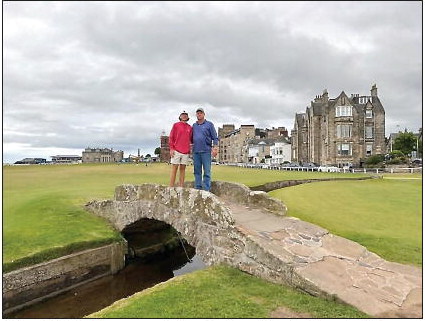
(L to R): Matthew and Russ Bell on the Swilcan Bridge at the Old Course at St. Andrews.



